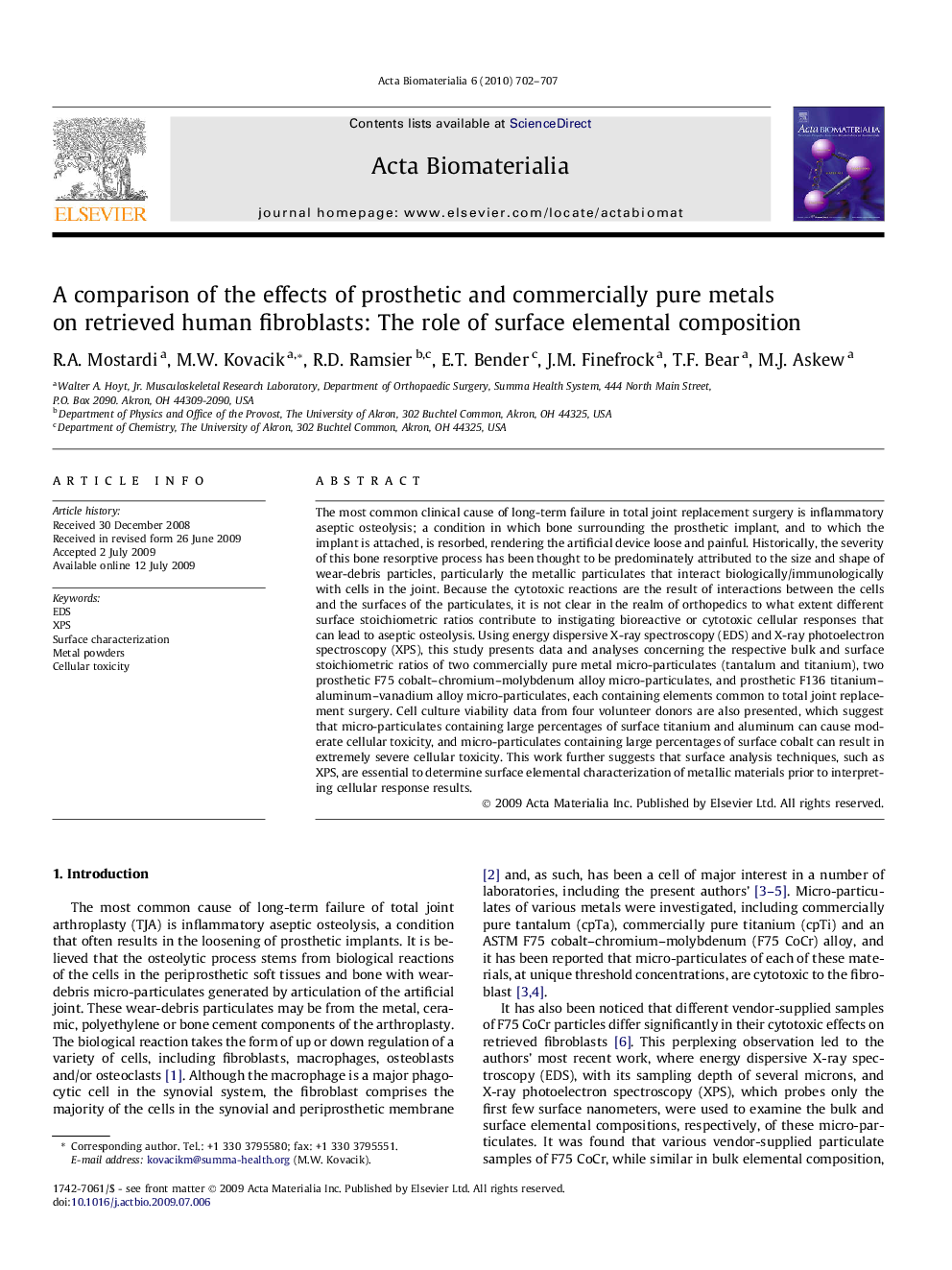| Article ID | Journal | Published Year | Pages | File Type |
|---|---|---|---|---|
| 2086 | Acta Biomaterialia | 2010 | 6 Pages |
The most common clinical cause of long-term failure in total joint replacement surgery is inflammatory aseptic osteolysis; a condition in which bone surrounding the prosthetic implant, and to which the implant is attached, is resorbed, rendering the artificial device loose and painful. Historically, the severity of this bone resorptive process has been thought to be predominately attributed to the size and shape of wear-debris particles, particularly the metallic particulates that interact biologically/immunologically with cells in the joint. Because the cytotoxic reactions are the result of interactions between the cells and the surfaces of the particulates, it is not clear in the realm of orthopedics to what extent different surface stoichiometric ratios contribute to instigating bioreactive or cytotoxic cellular responses that can lead to aseptic osteolysis. Using energy dispersive X-ray spectroscopy (EDS) and X-ray photoelectron spectroscopy (XPS), this study presents data and analyses concerning the respective bulk and surface stoichiometric ratios of two commercially pure metal micro-particulates (tantalum and titanium), two prosthetic F75 cobalt–chromium–molybdenum alloy micro-particulates, and prosthetic F136 titanium–aluminum–vanadium alloy micro-particulates, each containing elements common to total joint replacement surgery. Cell culture viability data from four volunteer donors are also presented, which suggest that micro-particulates containing large percentages of surface titanium and aluminum can cause moderate cellular toxicity, and micro-particulates containing large percentages of surface cobalt can result in extremely severe cellular toxicity. This work further suggests that surface analysis techniques, such as XPS, are essential to determine surface elemental characterization of metallic materials prior to interpreting cellular response results.
